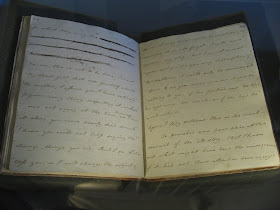 Egan, a Londoner of Irish origin, was a prolific author. Pierce’s first claim to fame was Boxiana (1812), a series on pugilism (prize-fighting). The first monthly instalment of Life in London, priced at one shilling and illustrated by George and Robert Cruikshank, was published by Sherwood, Neely & Jones on 15 July 1821.
Egan, a Londoner of Irish origin, was a prolific author. Pierce’s first claim to fame was Boxiana (1812), a series on pugilism (prize-fighting). The first monthly instalment of Life in London, priced at one shilling and illustrated by George and Robert Cruikshank, was published by Sherwood, Neely & Jones on 15 July 1821. You can find out more about Tom and Jerry’s rollicking adventures and the way they took society by storm in my latest feature for Jane Austen's Regency World.
Images: Engravings by George and Robert Cruikshank from author’s copy of the 1869 reprint of Life in London, Pierce Egan, (John Camden Hotten, Piccadilly, 1869.
1. Tom and Jerry pay a shilling to see the exhibition at the Royal Academy. Jane Austen went to picture exhibitions at Spring Gardens and Pall Mall in 1813.
1. Tom and Jerry pay a shilling to see the exhibition at the Royal Academy. Jane Austen went to picture exhibitions at Spring Gardens and Pall Mall in 1813.
2. Peep O’ Day Boys. A Street Row. The author losing his ‘reader’ (pocket-book), Tom and Jerry showing fight and Logic floored. Pierce Egan is the figure under attack on the left having his pocket picked.







